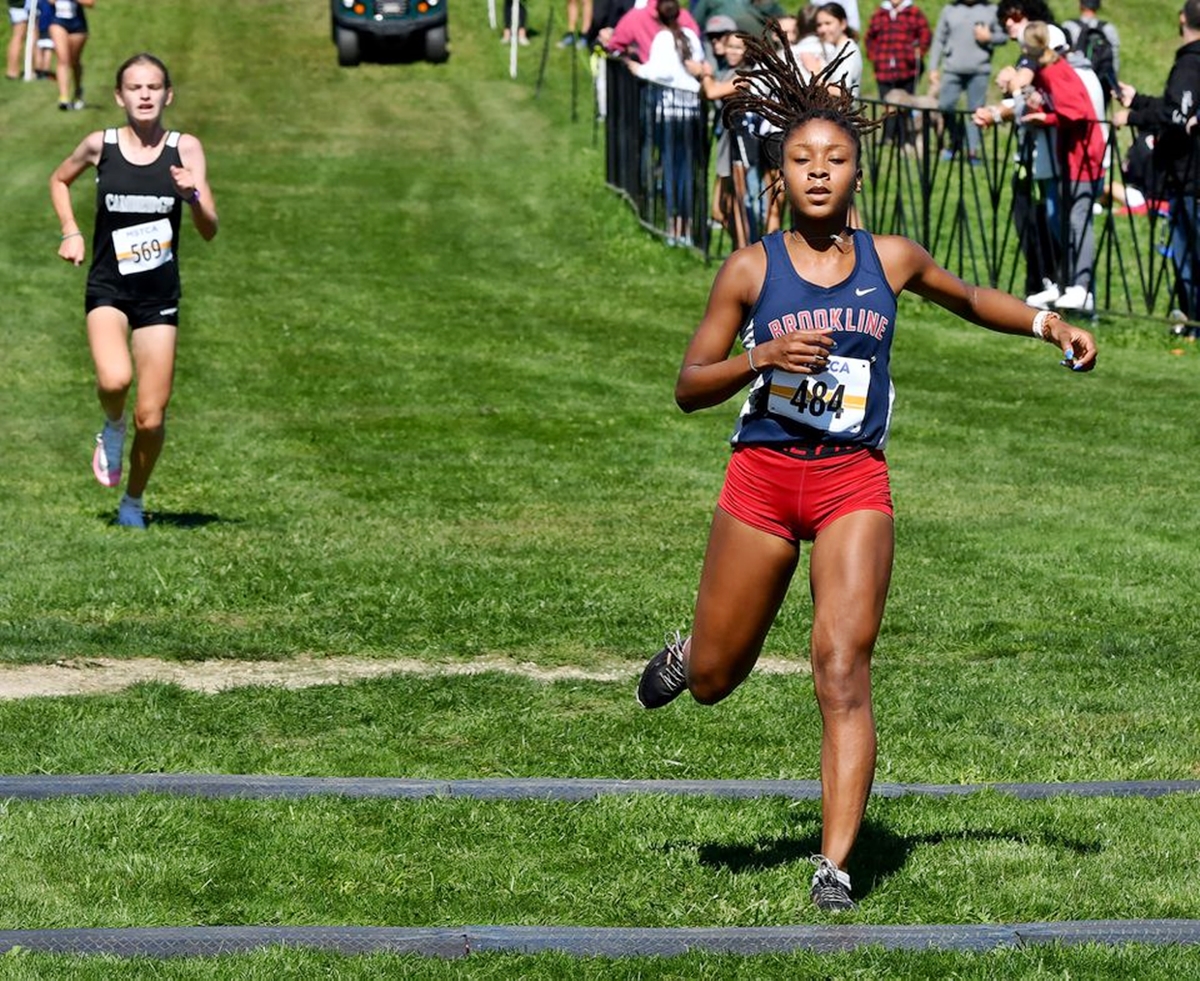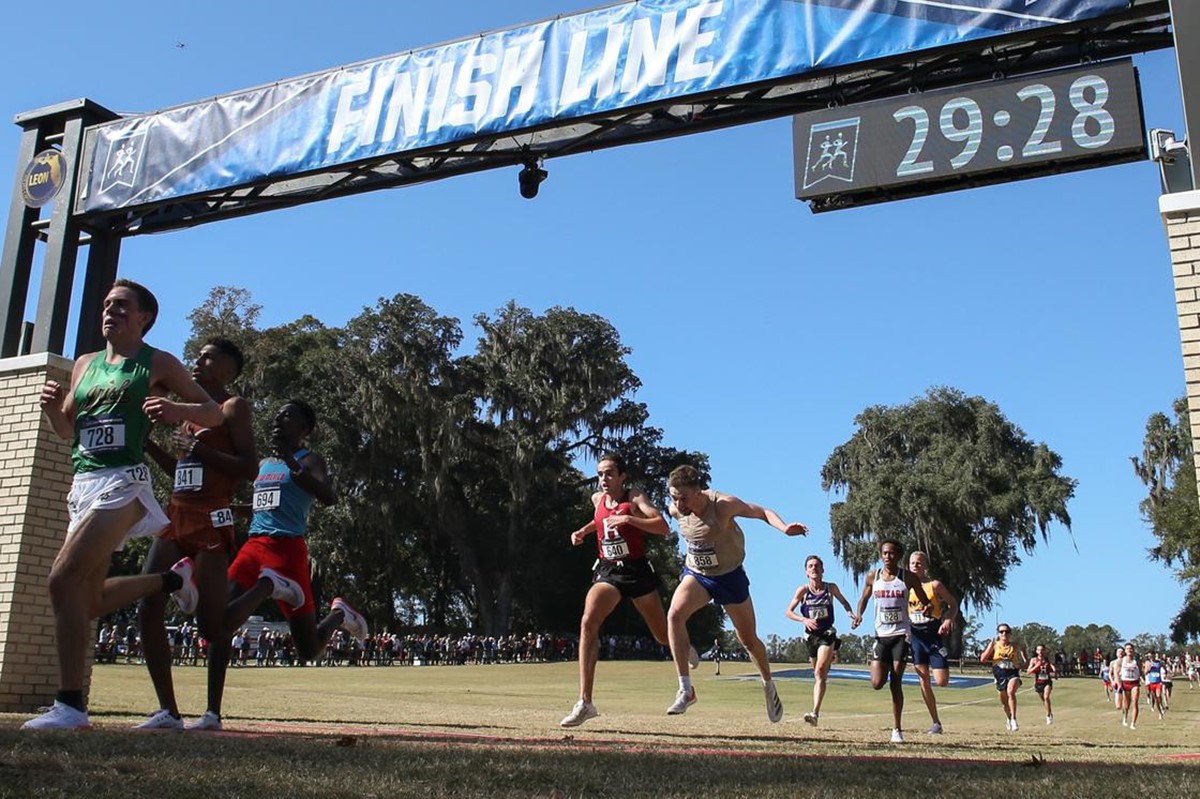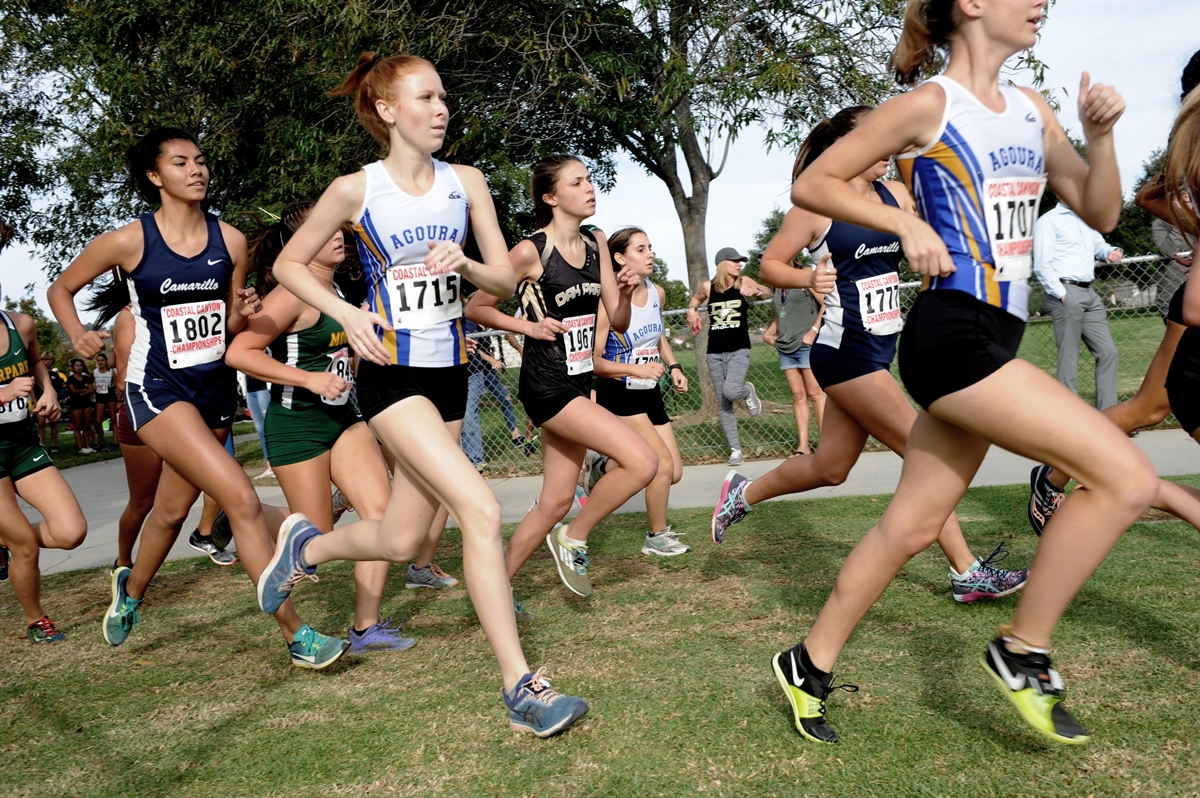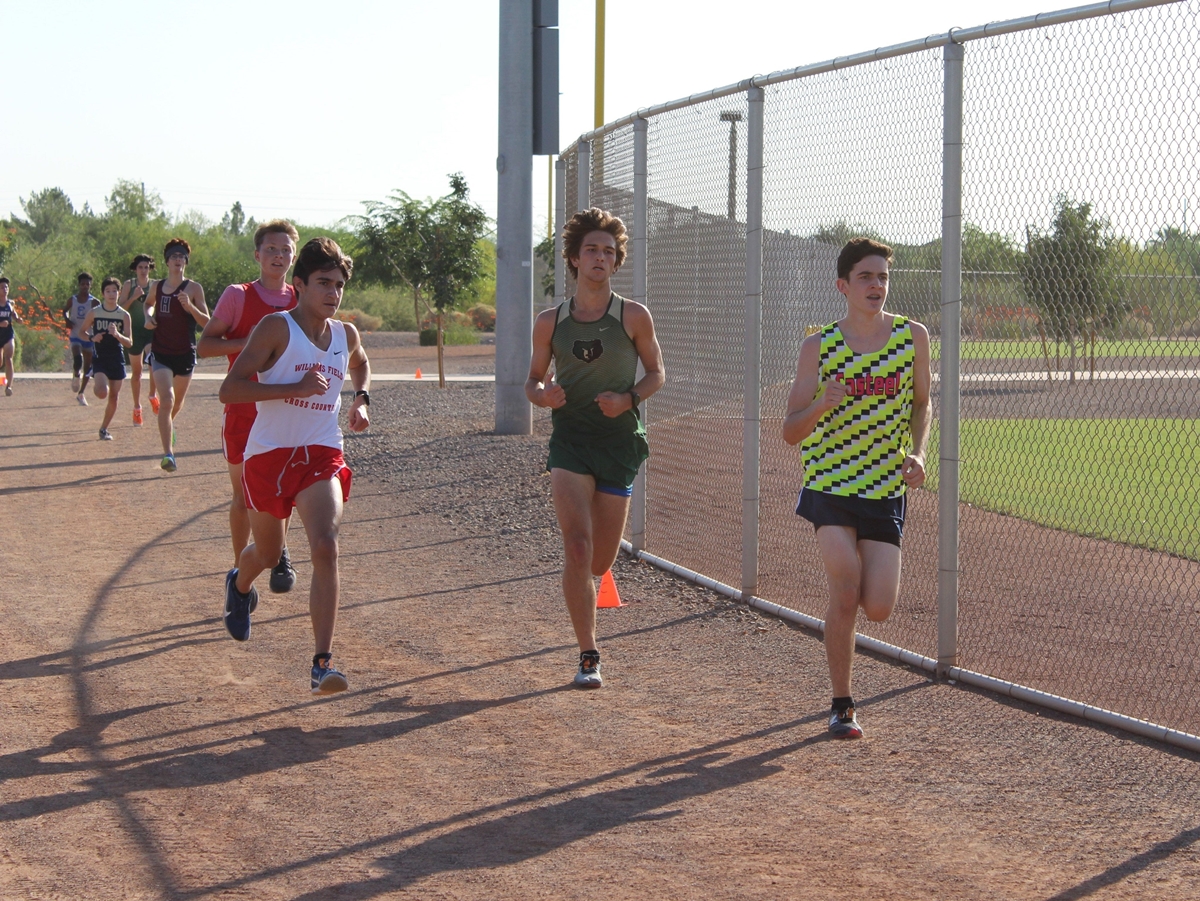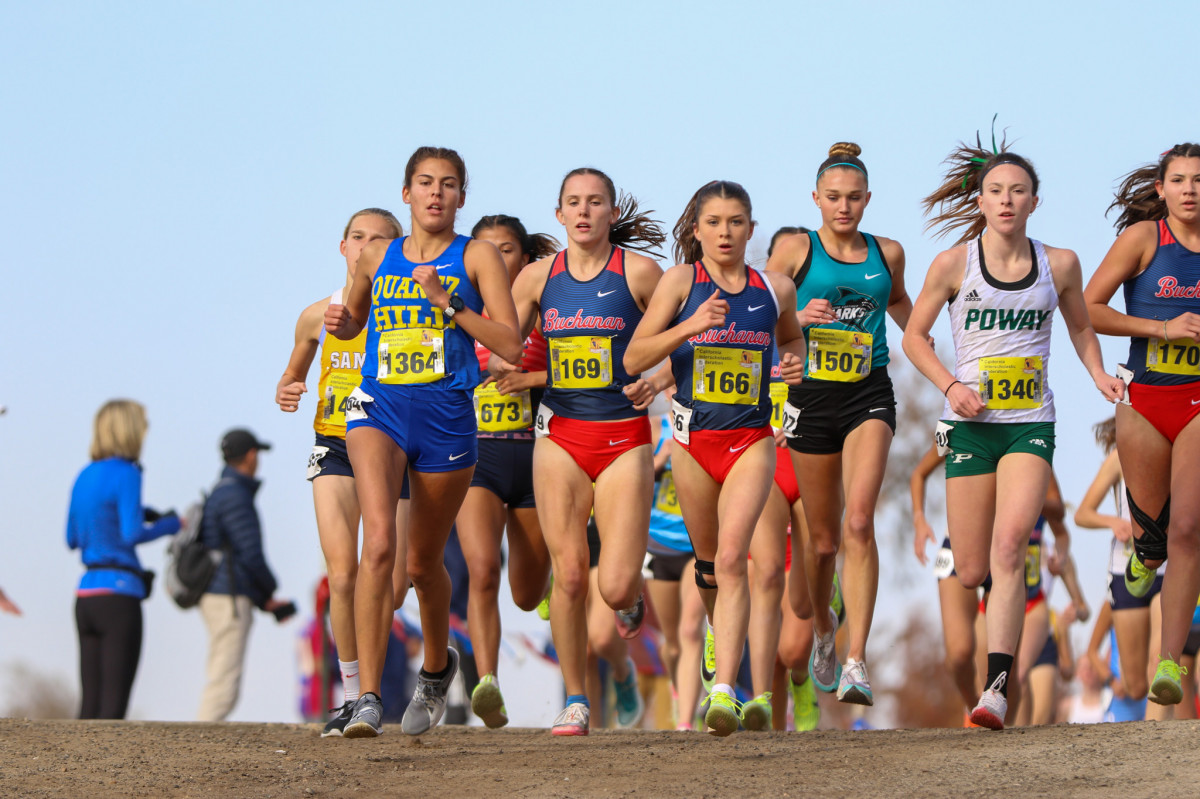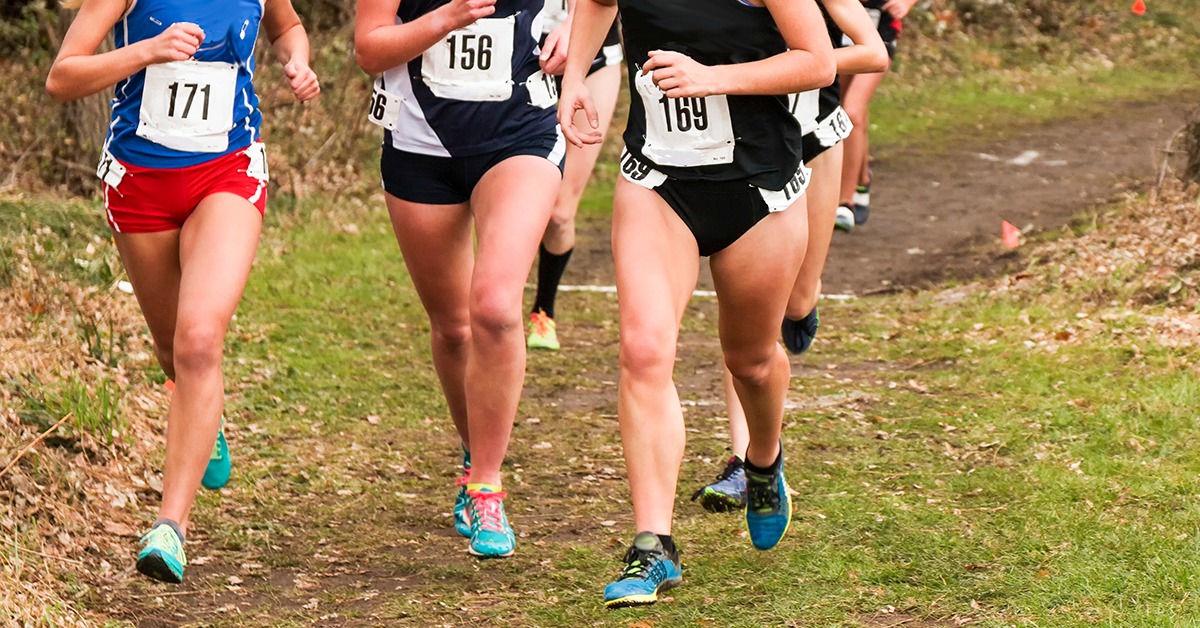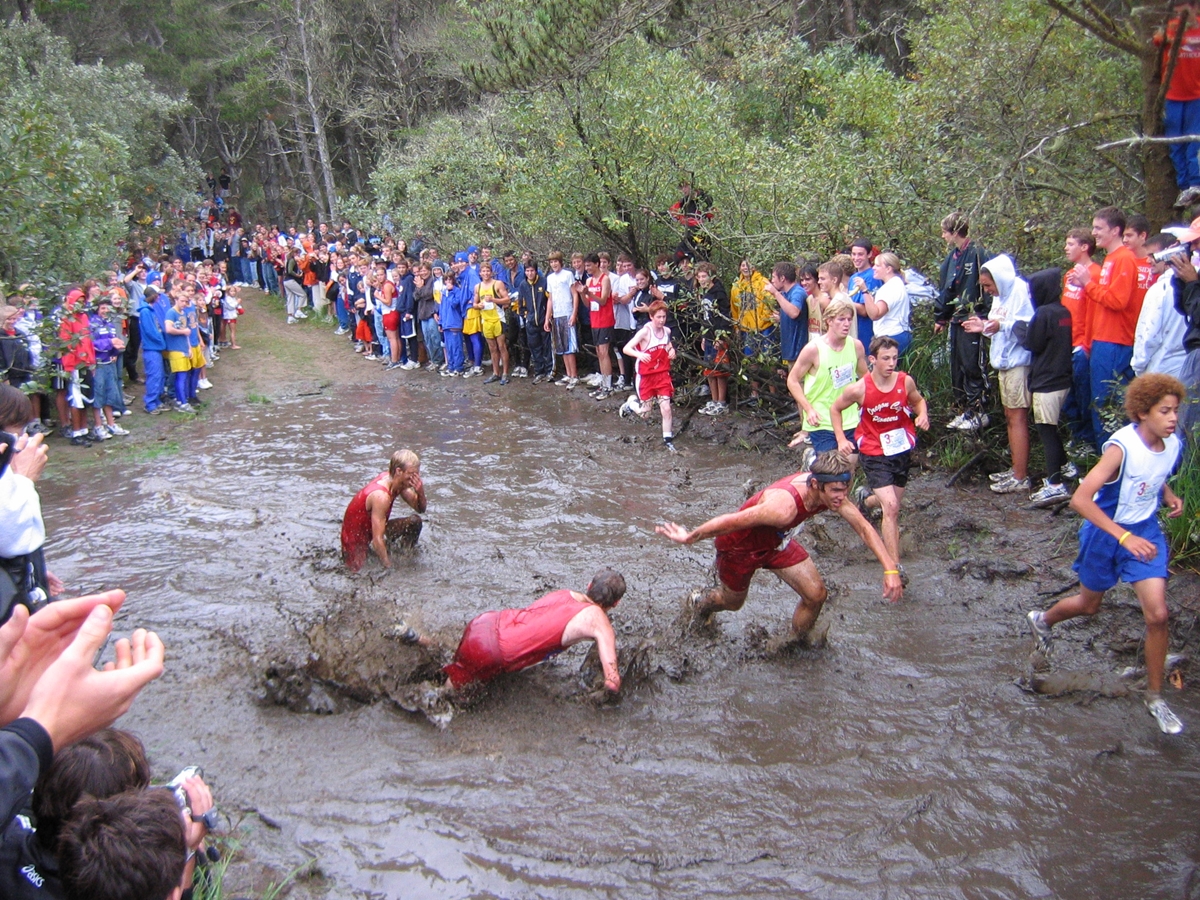Home>Misc>Featured>How Many Division 1 Cross Country Teams Are There
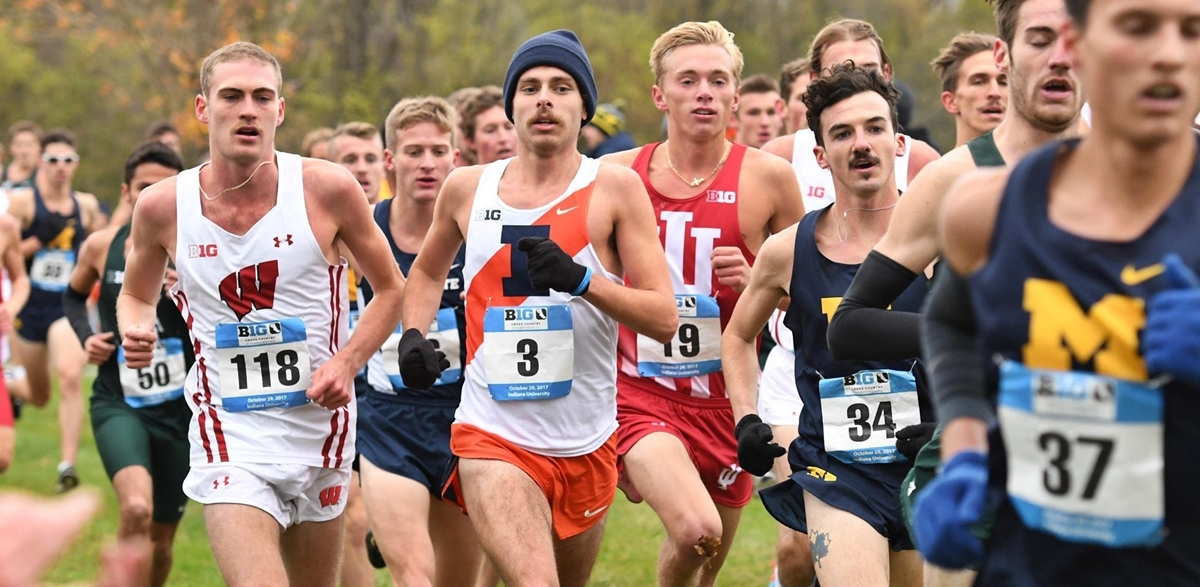

Featured
How Many Division 1 Cross Country Teams Are There
Modified: August 19, 2023
Discover Featured: How Many Division 1 Cross Country Teams Are There? Find out the number of Division 1 cross country teams and learn about collegiate competition in this ultimate guide.
Introduction
Cross country running is a demanding and exhilarating sport that requires endurance, speed, and mental toughness. In the world of collegiate athletics, Division 1 cross country holds a prominent place, attracting talented runners from all across the country. But how many Division 1 cross country teams are there? And how has the landscape of the sport evolved over the years? In this article, we will explore these questions and shed light on the growth and current state of Division 1 cross country.
Division 1 cross country is part of the larger college athletics framework overseen by the National Collegiate Athletic Association (NCAA). It consists of universities and colleges that have robust athletic programs and compete at the highest level in various sports, including cross country. These institutions offer student-athletes the opportunity to showcase their running prowess while pursuing academic excellence.
Over the years, Division 1 cross country has witnessed significant growth in terms of participation and competition. The sport continues to attract top athletes from high school programs across the United States, with runners aiming to continue their athletic journey at the collegiate level. Additionally, the increased visibility and accessibility of cross country events have contributed to its rising popularity among both athletes and spectators.
The number of Division 1 cross country teams varies from year to year due to a variety of factors, including the financial resources available to universities, Title IX compliance, and the overall commitment to athletic programs. These factors often influence the decision of institutions to establish or discontinue cross country teams. Additionally, the NCAA periodically evaluates and adjusts the sport classification system to ensure fair competition and equitable opportunities for student-athletes.
What is Division 1 cross country?
Division 1 cross country is the highest level of competitive running in the collegiate athletics system. It is governed by the NCAA, which sets the rules and regulations for the sport. In Division 1 cross country, universities and colleges field teams of male and female runners who compete in races of various distances, typically ranging from 5 kilometers (3.1 miles) to 10 kilometers (6.2 miles).
The sport follows a team-based structure, where athletes represent their respective institutions in meets and races. Teams compete both individually and collectively, with the performances of individual runners contributing to the team’s overall score. The goal is to secure the lowest combined score, with the first five or seven finishers from each team tallying points based on their finishing positions.
Division 1 cross country is a fall sport, with most competitions taking place from September to November. These races often feature challenging terrains, including grass, dirt, and varying elevations, making it a true test of endurance and running ability. The courses can range from flat to hilly, depending on the location and host institution.
The athletes who participate in Division 1 cross country are a diverse group, hailing from different backgrounds and possessing varying levels of running experience. Some may be high school standouts who garnered attention from college recruiters, while others may have discovered their passion for running later in life. Regardless of their background, Division 1 cross country provides an avenue for talented runners to showcase their skills and compete at a highly competitive level.
Division 1 cross country teams often have dedicated coaching staff who provide training, guidance, and strategic advice to the athletes. These coaches play a crucial role in the development of runners and the success of the team. They design training programs, analyze race strategies, and foster a supportive and competitive team culture.
The sport offers numerous opportunities for athletes to excel, both individually and as part of a team. Division 1 cross country athletes may earn individual accolades by achieving top finishes in races and qualifying for regional and national championships. Teams can also vie for conference championships and ultimately compete for the NCAA Division 1 Cross Country Championships, where the best teams in the nation battle it out for the coveted title.
The growth of Division 1 cross country
Division 1 cross country has experienced significant growth and increased popularity over the years. This growth can be attributed to various factors, including the expansion of athletic programs, increased opportunities for student-athletes, and a greater emphasis on the importance of physical fitness and participation in sports.
One of the key drivers behind the growth of Division 1 cross country is the expansion of athletic programs at universities and colleges. As institutions seek to attract and retain students, establishing robust athletic programs becomes crucial. Cross country presents a unique opportunity for schools to offer a sport that requires minimal infrastructure, making it a cost-effective option for athletic departments. This has led to the establishment of cross country teams in many colleges and universities that previously did not have them.
Another factor contributing to the growth of Division 1 cross country is the increased emphasis on physical fitness and health-consciousness in society. With more people recognizing the importance of regular exercise and leading an active lifestyle, participation in sports has gained popularity. Cross country, with its focus on endurance running and the mental and physical benefits it provides, has become an appealing sport for individuals looking to stay fit and challenge themselves.
Additionally, the accessibility of cross country has played a significant role in its growth. Unlike some sports that require expensive equipment or specialized facilities, cross country can be practiced virtually anywhere. This accessibility has made it easier for schools to offer cross country programs and for students to take up the sport at various levels, from grassroots to collegiate competition.
The growth of Division 1 cross country has also been fueled by the opportunities it provides for student-athletes. Many high school runners aspire to continue their athletic careers at the collegiate level, and Division 1 offers a competitive and prestigious platform for them to do so. The prospect of competing against top runners from other institutions, earning scholarships, and gaining exposure to potential professional opportunities has attracted talented athletes to the sport.
Furthermore, the increased visibility and coverage of cross country events has contributed to its growth. With the advent of streaming services and social media platforms, cross country races are now more accessible to a wider audience. This exposure has generated interest and enthusiasm for the sport, attracting new fans and encouraging more individuals to consider participating in cross country at all levels.
Overall, the growth of Division 1 cross country can be attributed to a combination of factors, including the expansion of athletic programs, increased awareness of the importance of physical fitness, accessibility of the sport, opportunities for student-athletes, and increased visibility. As the sport continues to evolve and gain popularity, it will undoubtedly attract more talent and continue to showcase the excitement and athleticism of cross country running.
Factors contributing to the number of Division 1 cross country teams
The number of Division 1 cross country teams can fluctuate from year to year due to various factors. These factors influence the decisions of universities and colleges to establish, maintain, or discontinue cross country programs. Understanding these factors can provide insights into the dynamics of Division 1 cross country and its growth over time.
One significant factor contributing to the number of Division 1 cross country teams is the financial resources available to institutions. Running a successful cross country program requires adequate funding for coaching staff, travel expenses, equipment, and facilities. Institutions with greater financial resources are more likely to invest in their athletic programs, including cross country, and sustain competitive teams. On the other hand, budget constraints may lead some schools to discontinue cross country or limit the number of scholarships available for student-athletes.
Another factor that affects the number of Division 1 cross country teams is compliance with Title IX, a federal law that prohibits sex discrimination in educational institutions receiving federal funding. Title IX requires institutions to provide equal opportunities for male and female athletes. If a university adds a men’s cross country team, it may need to add a women’s team or make other adjustments to maintain compliance. This can impact the number of cross country teams in the Division 1 level, as schools must evaluate their program offerings and ensure gender equity.
The commitment of the institution to its overall athletic program also plays a role in the number of cross country teams. Some schools prioritize certain sports and allocate more resources to those programs, while others may not have the same level of emphasis on cross country. This can result in disparities in the number of cross country teams across conferences and regions. Institutional priorities can shift over time, leading to changes in the number of cross country teams.
Demographic factors can also influence the number of Division 1 cross country teams. The population of student-athletes and the interest in running can vary in different regions of the country. Areas with a larger pool of talented runners may have more cross country programs, while areas with lower interest or limited access to training opportunities may have fewer teams. University demographics and geographical location can also impact the decision to establish or eliminate cross country programs.
Lastly, the NCAA periodically evaluates and adjusts the sport classification system to ensure fair competition and equitable opportunities for student-athletes. This can result in changes to the number of Division 1 cross country teams as the NCAA evaluates the needs and viability of the sport at each level. These evaluations consider factors such as the overall growth of cross country, participation rates, and financial sustainability.
Overall, the number of Division 1 cross country teams is influenced by financial resources, Title IX compliance, institutional commitments, demographic factors, and NCAA evaluations. These factors interact with each other, and changes in any one of them can have an impact on the overall landscape of Division 1 cross country. As the sport continues to evolve and adapt, the number of teams will likely undergo changes to reflect the dynamics of collegiate athletics.
How many Division 1 cross country teams are there currently?
As of the most recent data, there are approximately 351 Division 1 cross country teams competing in the United States. This number can vary slightly from year to year due to factors such as school expansions, program additions, and reclassifications. These teams are spread across various conferences and regions, providing student-athletes with diverse competition and opportunities to showcase their running abilities.
The number of Division 1 cross country teams reflects the overall popularity and growth of the sport at the collegiate level. It demonstrates the commitment of universities and colleges to providing student-athletes with opportunities to compete and excel in cross country. The presence of a significant number of teams also fosters a competitive environment, as runners compete against a wide range of opponents and vie for conference championships and national recognition.
It’s important to note that the number of Division 1 cross country teams can vary by gender. Some institutions field separate men’s and women’s teams, while others have combined teams that compete in both men’s and women’s events. The split between men’s and women’s teams is determined by institutional decisions and compliance with Title IX regulations, which require schools to provide equal athletic opportunities for male and female athletes.
Division 1 cross country teams are organized into conferences and regions, which facilitate scheduling and competition. Conference championships offer athletes the chance to compete against rivals and earn conference titles, while regional competitions determine qualification for the NCAA Division 1 Cross Country Championships. These championships bring together the top teams and individual runners from across the country to compete for national honors.
Overall, the current number of Division 1 cross country teams highlights the popularity and significance of the sport within the collegiate athletics landscape. It reflects the dedication and commitment of universities and colleges to supporting and fostering the growth of cross country programs. As the sport continues to evolve and attract new talent, the number of Division 1 cross country teams may undergo changes, but the opportunities for student-athletes to compete and showcase their abilities will remain robust.
Changes in the number of Division 1 cross country teams over the years
The landscape of Division 1 cross country has undergone notable changes in terms of the number of competing teams. Various factors have influenced these changes, including school expansions, program additions or eliminations, shifts in institutional priorities, and adjustments in NCAA guidelines. Understanding the dynamics of these changes provides insight into the evolution of Division 1 cross country and its current state.
In recent years, there has been a gradual increase in the number of Division 1 cross country teams. As universities and colleges continue to recognize the value and popularity of the sport, many have established new programs or reinstated previous programs that were discontinued. This growth reflects the increased interest in cross country among student-athletes and the commitment of institutions to offering diverse athletic opportunities.
On the other hand, there have also been instances where schools have made the decision to discontinue their cross country programs. This can sometimes be attributed to financial considerations, as institutions evaluate their athletic budgets and prioritize resources for other sports. Additionally, changes in institutional priorities, shifts in demographics, and ongoing discussions around Title IX compliance can influence the decision to add or eliminate cross country teams.
The NCAA plays a role in regulating the number of participating teams by periodically reviewing the sport classification system and providing guidelines for program additions or reclassifications. These evaluations consider factors such as the overall growth and viability of cross country, participation rates, and geographic distribution of teams. As a result, there have been instances where schools have transitioned between different divisions or reclassified their cross country programs within Division 1.
The changes in the number of Division 1 cross country teams are not limited to national trends. They can also vary between conferences and regions. Some conferences may see an increase in teams, while others may experience a decline. These changes can be influenced by factors specific to each conference, such as the expansion or contraction of member institutions, realignment efforts, and conference decisions to add or eliminate certain sports.
It’s important to note that the changes in the number of Division 1 cross country teams reflect the dynamic nature of collegiate athletics. As institutions adapt to evolving circumstances and make decisions based on financial, compliance, and programmatic considerations, the landscape of Division 1 cross country can fluctuate. However, the sport remains a vibrant and competitive environment for student-athletes to pursue their passion for running and showcase their talent on a national stage.
Division 1 cross country conferences and regions
Division 1 cross country is organized into different conferences and regions, which provide structure and facilitate competition among teams. These conferences and regions play a crucial role in scheduling meets, determining conference champions, and qualifying teams for regional and national competitions.
The number of conferences in Division 1 cross country can vary over time due to conference realignment efforts and changes in membership. Currently, there are numerous conferences that span the country, allowing teams to compete against opponents of similar caliber and geographic proximity. Some notable conferences in Division 1 cross country include the ACC (Atlantic Coast Conference), Big Ten Conference, Pac-12 Conference, SEC (Southeastern Conference), and Big East Conference, among others.
Conferences in Division 1 cross country often consist of teams from the same geographical area or share similar institutional characteristics. Conference championships are the culminating events within each conference, where teams compete for the conference title. These championships provide an opportunity for athletes to showcase their talent, earn individual and team accolades, and qualify for regional and national competitions.
Regional competition is an integral part of Division 1 cross country. Teams are grouped into different regions based on geographic proximity to compete against each other in regional championships. The number of regions can vary, but typically, there are nine designated regions in Division 1 cross country. The regional championships offer teams the chance to qualify for the NCAA Division 1 Cross Country Championships, which bring together the top teams and individual runners from each region to compete for national honors.
Competing in conferences and regions allows Division 1 cross country teams to build rivalries, establish conference dominance, and earn recognition within their specific geographical area. It also provides a framework for scheduling meets and balancing the competitive landscape among teams. The conferences and regions act as conduits for athletic success and recognition, providing valuable opportunities for athletes to compete and showcase their abilities.
The conferences and regions in Division 1 cross country contribute to the overall growth and development of the sport. They foster competition, camaraderie, and a sense of community among teams. Additionally, they offer student-athletes a platform to compete against both familiar and unfamiliar opponents, gaining exposure and experience at the highest level of collegiate cross country.
Overall, the existence of conferences and regions in Division 1 cross country enhances the organization and competitiveness of the sport. It provides athletes with opportunities to achieve individual and team goals, while also contributing to the rich history and tradition of collegiate cross country. The conferences and regions serve as vital components of the Division 1 cross country landscape, shaping the competitive environment and offering a pathway to national recognition.
Challenges faced by Division 1 cross country teams
While Division 1 cross country offers exciting opportunities for student-athletes, it also presents its fair share of challenges. These challenges can range from physical demands and mental resilience to logistical considerations and balancing academic commitments. Understanding and navigating these challenges is essential for teams aiming to achieve success in the highly competitive collegiate cross country landscape.
One of the primary challenges faced by Division 1 cross country teams is the physical rigor of the sport. Cross country requires a high level of endurance, stamina, and strength. Athletes must endure long-distance running over varying terrains and challenging courses. The rigorous training regimen and the demands of competition can put a strain on the body, requiring athletes to prioritize conditioning, injury prevention, and recovery to maintain peak performance throughout the season.
Travel logistics and time management also pose significant challenges for Division 1 cross country teams. Meets and competitions often involve traveling long distances, sometimes across different time zones. Coordinating travel arrangements, managing academic commitments, and ensuring adequate rest and recovery can be challenging for both athletes and coaching staff. Balancing athletic and academic responsibilities is crucial, as student-athletes must maintain their eligibility and academic progress while dedicating substantial time and effort to their training and competition schedules.
Recruiting and developing talent is another constant challenge for Division 1 cross country teams. With the highly competitive nature of the sport, attracting top recruits and nurturing their potential becomes a priority for teams. Coaches must navigate the recruitment process, identify promising athletes, and convince them to join their program. Developing talent requires implementing effective training programs, providing guidance and support, and fostering a positive team culture and competitive environment that promotes growth and success.
Financial considerations and funding resources can also pose challenges for Division 1 cross country teams. Running a successful cross country program requires financial resources for coaching staff, travel expenses, equipment, and facilities. Securing adequate funding to support the program’s needs is crucial, especially for schools with limited resources. Teams must find ways to maximize their resources, seek sponsorships, and demonstrate the value and impact of their programs to secure financial support from their institutions and external sources.
Additionally, ensuring equitable opportunities for athletes and compliance with Title IX regulations can be challenging for Division 1 cross country teams. Schools must navigate the intricacies of gender equity and scholarship allocations to provide equal opportunities for male and female athletes. This often involves evaluating roster sizes, scholarship budgets, and program offerings to maintain compliance while promoting the growth and success of both men’s and women’s cross country teams.
Overcoming these challenges requires strong leadership, effective communication, and a collaborative approach from coaching staff, administrators, and athletes. By addressing these challenges head-on, Division 1 cross country teams can create an environment that fosters athlete development, success on and off the field, and a sense of pride and camaraderie among team members.
Conclusion
Division 1 cross country holds a prominent place in the world of collegiate athletics, attracting talented runners from all across the country. The sport continues to experience growth and popularity, with universities and colleges establishing and sustaining cross country programs at the highest level of competition. The number of Division 1 cross country teams fluctuates due to various factors such as financial resources, compliance with Title IX, institutional commitments, demographic considerations, and NCAA evaluations.
Division 1 cross country provides student-athletes with opportunities to showcase their running skills and compete against top talent. The sport encompasses both individual and team competition, with athletes aiming for personal records and contributing to the overall success of their teams. The existence of conferences and regions within Division 1 cross country facilitates scheduling, competition, and the qualification process for regional and national championships. These conferences and regions enhance the organization and competitiveness of the sport, providing student-athletes with a platform to excel and gain recognition.
Despite the numerous opportunities and successes in Division 1 cross country, there are challenges that teams must navigate. Physical demands, travel logistics, time management, recruiting and talent development, financial considerations, and compliance with Title IX pose constant challenges for teams. However, with strong leadership, effective communication, and a collaborative approach, these challenges can be overcome to create a supportive, competitive, and successful environment for Division 1 cross country teams.
As Division 1 cross country continues to evolve and adapt, it will undoubtedly attract more talent and showcase the excitement and athleticism of the sport. The dedication and commitment of universities, coaches, administrators, and athletes fuel the growth of Division 1 cross country, ensuring that the sport remains a vibrant and highly competitive platform for student-athletes to pursue their running dreams.
